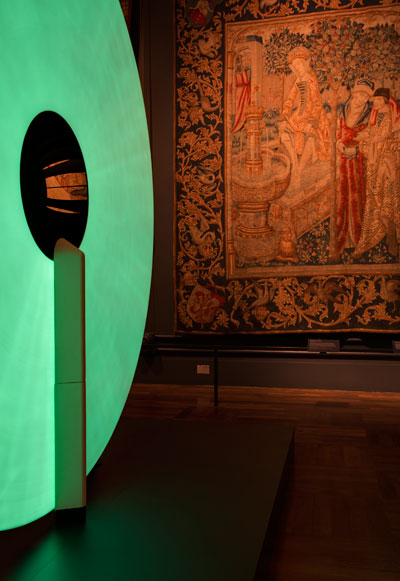|
A luminuous green disc has brought light to a darkened room full of medieval tapestries. Scroll down to watch a video of the installation A large, luminous green disc that revolves and changes appearance over time has appeared in the dimly-lit medieval tapestries gallery in the V&A. Candela is the work of graphic designer Michael Montgomery, ceramicist Ian McIntyre and product designer Felix De Pass. A wheel covered in the phosphorescent material Super-LumiNova — used to illuminate watch faces — turns on a motor in front of a light source of more than 700 LEDs of different strengths. Bursts of light charge the surface of the material, which reproduces it as patterns that move and change over time.
The pigment is strong when it is first blasted with light, but fades after about three minutes to create an ambient glow, with layers appearing as it is blasted again. The idea emerged after the designers went to the Super-LumiNova factory. “We developed the whole concept around the material and how it behaves,” De Pass says. “We visited the manufacturer in Switzerland and learnt about its properties and experimented with samples.” The material is a ceramic that is ground down to a very fine powder, with earth and metal added. It is then applied as a thin layer to an aluminium composite surface.
“We were quite keen that the light effects that we were creating weren’t harsh. This material allows an expressive, mark-making experience because the intensity of light slowly disperses, creating a layering effect as it recharges.” All the components of the installtion have been reducd to a minimum – with the motor and electrical elements silent and invisible. “The low light in this room creates an atmosphere and is also necessary to preserve the tapestries. We wanted it to fit well within this space, which is one of the most peaceful in the V&A,” says McIntyre. |
Words Debika Ray |
|
|

















